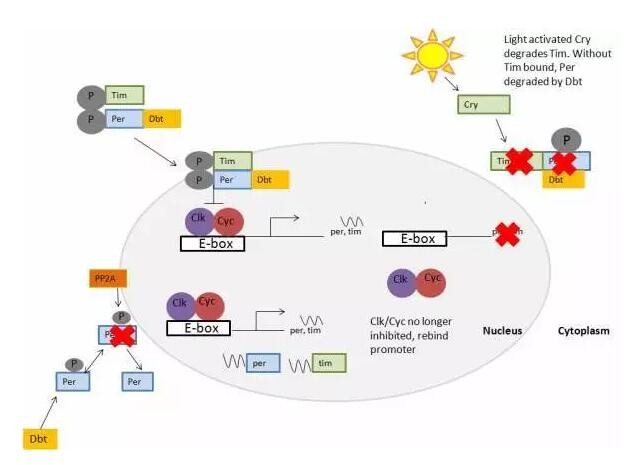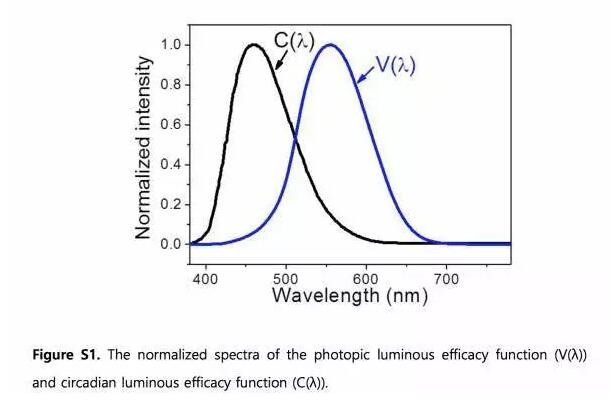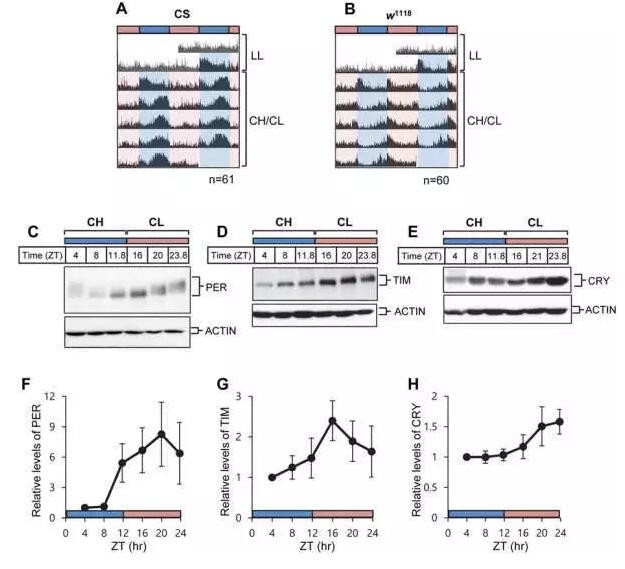LED Semiconductor Lighting Network News 22:00 - 6:00 Is sleep really healthier than 2:00 - 10:00?

Too long to read the summary: If you can guarantee that the 24-hour light of 2:00 - 10:00 sleep and the light of 22:00 - 6:00 are relatively consistent, there is no difference; more specifically, the light here means that it can suppress the fade A specific wavelength of light secreted by melanin. Several of the previous ones have already had more professional answers. @秋海's answer also mentions the importance of lighting to the biological clock. I used to emphasize the importance of lighting every time I answered the clock problem. I will update one here. Papers published just two days ago: The recent light cycle is enough to maintain the normal rhythm of fruit flies. The following is a background introduction: The so-called "near-day", English is circadian, circa has a close, approximate meaning, diem represents a day, so carcadian is close to 24 hours a day, circadian rhythm is often translated into "circadian rhythm", I personally feel that "near rhythm" is more accurate. In addition to the recent rhythm, there are nearly half-day rhythms, nearly 7-day rhythm, near-month rhythm, and recent rhythms... For the convenience of reading, the following is referred to as the biological clock, but you should be aware that the complete biological clock is more than the recent rhythm. All animals have a biological clock that adapts to environmental changes such as light and dark cycles. During this approximately 24 hour clock cycle, there are periodic changes in behavior and physiology, such as sleeping, such as body temperature. The circadian clock needs to be reset every day to ensure accuracy and coordination with the external environment. Previous studies have shown that in dim light, each person's circadian clock cycle is about 24 hours and 11 minutes, instead of the standard 24 hours, so the circadian clock resets. Especially important, and light is the most important clue to the body clock reset. After hundreds of millions of years of evolution, the molecular mechanism of the biological clock is conservative from single-celled organisms to humans. Therefore, although this paper is based on fruit fly, the conclusion should be applicable to humans. A schematic diagram of the molecular regulation of the Drosophila circadian clock, the clock gene and the cycle gene encode proteins that form heterodimers as transcription factors, promoting the expression of downstream genes of period and timeless, and the newly synthesized proteins PER and TIM promote post-transcriptional modification at the molecular level. Oscillation, which in turn affects downstream activity, can also inhibit the activity of CLK and CYC heterodimers after modification, and PER/TIM degradation causes a second round of transcriptional translation. Before the invention of artificial light sources, sunlight was the only source of light. With the widespread use of artificial light sources, people have a rich nightlife. At the same time, nighttime illumination provides the wrong time clues for the body clock, which has become a problem that is increasingly affecting human health. Biological clock disorders are often associated with sleep problems, which can also lead to mood swings that cause metabolic diseases such as obesity and diabetes. There have been many studies on the health status of shift workers, and shift workers have higher risks of diabetes, cardiovascular disease, and obesity, and the risk of breast cancer is higher. The immune system is closely related to the circadian clock, and the human immunity is different at different times of the day. The intensive care unit usually illuminates for 24 hours, which interferes with the patient's body clock, which is very unfavorable for the patient's recovery. But it is impossible to limit the use of lighting at night, so we should think about what kind of lighting system will not cause the circadian clock disorder. The circadian body clock is most sensitive to light at blue wavelengths. It is known that the secretion of melatonin is suppressed by light as an important output of the circadian clock, and the wavelength of light that most inhibits melatonin secretion is about 450 - 470 nm. Although the blue light is in the visible wavelength range, the conventionally formed visual cones and rods experience the influence of blue light on the circadian clock, and more importantly, the blue light and then the body clock is the melanocyte ganglion cells, and The signal is transmitted to the central clock of the human body, and the nucleus is viewed on the cross to control the body clock. 
The researchers used multiple LED sources to control the intensity of the light, the correlated color temperature, and the spectral power distribution, hoping to create a healthy lighting system that would not disturb the circadian clock.
In order to quantitatively evaluate the health effects of the illumination system, they introduced two concepts, visual illuminance (VIL) and circadian illuminance (CIL). These two Chinese are mys, and I am replacing them with English shorthand. VIL is easier to understand, that is, visible light shines on the surface and can be measured in illuminance units lx, while CIL calculates VIL based on the different effects of different wavelengths of light on melatonin secretion inhibition, in units of biolux (blx) .
Considering that some people like to turn on the lights and sleep, it is possible to design a lighting system that not only satisfies nighttime illumination, but also does not inhibit melatonin secretion from affecting sleep quality.

Wavelength distribution of VIL and CIL
They found that illumination with a high CIL value is more likely to disturb the circadian clock than a lower CIL value. The CIL high/low 12-hour cycle within a day can maintain the circadian clock as well as the normal light-dark cycle, and can detect fruit flies and circadian clocks at the molecular level. A cyclical change in related protein expression.
After they moved the CIL lighting back for 6 hours, the fruit clock of the fruit fly will also adjust.
Each sentence here is a large picture with multiple subgraphs. Only one is attached below. The 24-hour CIL high/low 12-hour cycle can maintain the biological clock like the normal light-dark cycle. PER, TIM, CRY are Three proteins associated with the circadian clock.

In short, the wavelength of light that inhibits the secretion of melatonin is the most important influence on the circadian clock. Whether it is sunrise, sunset or nocturnal, the CIL high light is selected during the activity, and the CIL low light should be selected before going to bed. Switching to warm lighting before going to bed is also the principle.
Push In Wiring Connector,Classic Splicing Connector,Fast Splicing Connector,Wire Splicing Connector
Wonke Electric CO.,Ltd. , https://www.wkdq-electric.com